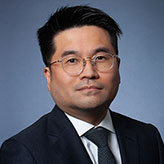September 30, 2025
AI’s Second Act and How to Capitalize On It

It is not “if” robots will compete but when
Humans have been worried about robots replacing them for over four decades. Until recently, the closest invention resembling a robot—the personal computer—boosted productivity but still relied heavily on human input. However, this may change with the rapid development of artificial intelligence and the recent announcement of Nvidia’s “Jetson Thor” superchip.
Jetson Thor could be a game-changer. Capable of learning, processing, and even "thinking," it's the closest technology yet to resembling the human brain. But a brain alone doesn’t make a robot complete—it also needs learning tools, body parts and muscles. These are all actively being developed as we speak.
This would mark the second phase of artificial intelligence (AI) robotics: physical robots. The first phase has already arrived and flourished—agentic AI (robots with a "brain" but no body) is widely used in business and personal capacities. If you haven’t noticed, agentic AI is already affecting youth employment. In Canada, the unemployment rate for those aged 20–24 is double the national average. Many entry-level jobs have been replaced by AI—and these roles may be gone for good. Physical robots could trigger another wave of job displacement, this time in roles requiring manual labour.
Looking ahead, jobs (labour) will need to continuously reinvent themselves. Robots learn by copying humans—and they learn fast. This type of competition will drive both efficiency and innovation, which bodes well for the economy and the stock market. In this new reality, it has never been more important to own a stake in the economy.
Aside from strength in the tech and innovation sectors, reported second-quarter U.S. corporate earnings have been solid overall. This has helped ease concerns that tariffs could dampen consumer spending and hurt the broader economy. While some of these impacts may start to show in the coming quarters, we expect increased business capital spending and government spending to help cushion the blow. Additionally, central banks—including the Federal Reserve—are entering or re-entering a rate-cutting cycle. Even though rates may decline, the attractiveness of fixed income is generally declining due to supply as governments continue to raise debts.
In light of this environment, our portfolios remain overweight in cash and equities (with meaningful positions in leaders of AI) and underweight in fixed income.
About the Author
Alfred Lam, Senior Vice President, Co-Head of Multi-Asset, joined CI GAM in 2004. He brings over 23 years of industry experience to his portfolio design, asset allocation, portfolio construction, and risk management responsibilities, which include chairing the multi-asset investment management committee and sizing investment bets to drive added value and manage risk. Alfred holds the CFA designation and an MBA from York University Schulich School of Business.
IMPORTANT DISCLAIMERS
The opinions expressed in the communication are solely those of the author(s) and are not to be used or construed as investment advice or as an endorsement or recommendation of any entity or security discussed. This document is provided as a general source of information and should not be considered personal, legal, accounting, tax or investment advice, or construed as an endorsement or recommendation of any entity or security discussed. Every effort has been made to ensure that the material contained in this document is accurate at the time of publication. Market conditions may change which may impact the information contained in this document. All charts and illustrations in this document are for illustrative purposes only. They are not intended to predict or project investment results. Individuals should seek the advice of professionals, as appropriate, regarding any particular investment. Investors should consult their professional advisors prior to implementing any changes to their investment strategies.
Certain statements in this document are forward-looking. Forward-looking statements (“FLS”) are statements that are predictive in nature, depend upon or refer to future events or conditions, or that include words such as “may,” “will,” “should,” “could,” “expect,” “anticipate,” “intend,” “plan,” “believe,” or “estimate,” or other similar expressions. Statements that look forward in time or include anything other than historical information are subject to risks and uncertainties, and actual results, actions or events could differ materially from those set forth in the FLS. FLS are not guarantees of future performance and are by their nature based on numerous assumptions. Although the FLS contained herein are based upon what CI Global Asset Management and the portfolio manager believe to be reasonable assumptions, neither CI Global Asset Management nor the portfolio manager can assure that actual results will be consistent with these FLS. The reader is cautioned to consider the FLS carefully and not to place undue reliance on FLS. Unless required by applicable law, it is not undertaken, and specifically disclaimed that there is any intention or obligation to update or revise FLS, whether as a result of new information, future events or otherwise.
Certain names, words, titles, phrases, logos, icons, graphics, or designs in this document may constitute trade names, registered or unregistered trademarks or service marks of CI Investments Inc., its subsidiaries, or affiliates, used with permission. All other marks are the property of their respective owners and are used with permission.
Certain statements contained in this communication are based in whole or in part on information provided by third parties and CI Global Asset Management has taken reasonable steps to ensure their accuracy. Market conditions may change which may impact the information contained in this document.
